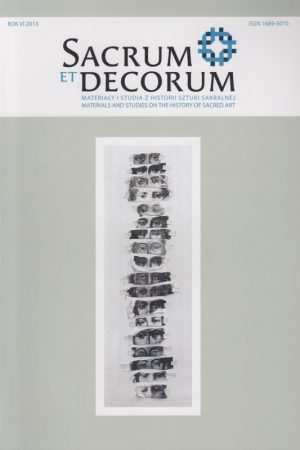The religious iconography of female artists in the Independent Culture Movement
Keywords:
iconography, independent culture, Veil of Veronica, martyrology, Polish art, the 1980sAbstract
When studying a certain area of art, is it justified to attempt certain generalizations and invoke sexual determinism? Is there such a thing as a type of iconography closer to the experience of female artists? In our times, the lines between the sexes are being blurred and such statements are dismissed as incorrect. However, it may be worthwhile to suspend judgment for a moment and closely examine the peculiar interpretation female artists gave to certain iconographic motifs, especially in those works which tackle religious themes but serve a private, rather than a liturgical, purpose. The largest number of relevant examples herald from the difficult decade of the 1980s, when the pervasively tragic sense of time and place favoured the appearance of art that rooted the audience in a sense of community and metaphysical allusions. Stereotypical thinking about the religious inspiration of women would lead us to expect a large profusion of pieces devoted to the Virgin Mary and the intimate relationship between mother and son in their oeuvre. Pieces of this kind, to be sure, do appear in the 1980s; they usually show the Black Madonna of Jasna Gora, alone or with the infant Jesus. They are, however, rarely infused with the artist’s private experience. Without attempting any synthetic generalizations, but keeping in mind hundreds of relevant paintings, it can be said that in their treatment of Christian iconography the female artists of the Independent Culture Movement rarely addressed the typically feminine theme of motherhood. Motifs of the Passion served as far superior vehicles for their emotional experience. Were we to put a finger on the most typical feature of the Crucifixions created by female artists, it would have to be the unwillingness to depict the body in an explicit, anatomical manner. Their artwork is full of understated forms, luminist expression, nearly abstract arrangements of the surface. However, their works typically reflect a common concern for community and fellow human beings. The theological and artistic need to find a form that would be able to carry the weight of communal experience often pushed them to draw on the theme of the Cenacle. Even when they paint scenes without human figures, such as landscapes and still lifes, their images express the drama of separation and the hope for the restoration of human relationships.Downloads
Downloads
Published
How to Cite
Issue
Section
License
Copyright (c) 2013 Sacrum et Decorum

This work is licensed under a Creative Commons Attribution-NonCommercial-NoDerivatives 4.0 International License.
In line with the Open Access policy, authors retain full copyright to their articles – without restrictions.
Authors can deposit their articles in a repository of their choice.


